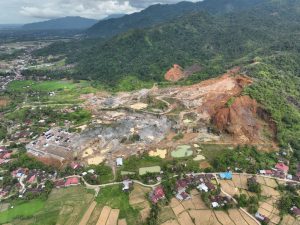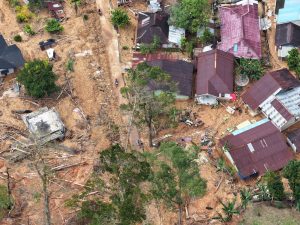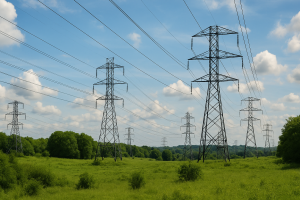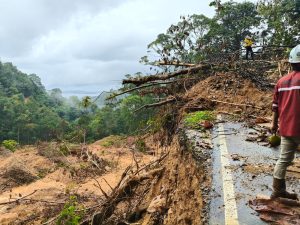Jakarta—The Meteorology, Climatology, and Geophysics Agency (BMKG) states that 95 per cent of disasters in Indonesia are hydrometeorological disasters. Extreme weather is no longer just an occasional phenomenon but an increasingly worrying new pattern.
In a press statement on Thursday, 24 April, Acting. BMKG Head Dwikorita Karnawati explained the urgency of adapting disaster protection systems in the era of climate change. “Extreme rainfall, storms, droughts and landslides are becoming more prevalent and inevitable,” Dwikorita said at an international forum titled “Exploring Technological and Interdisciplinary Approaches to Disaster Management in Indonesia”, organised by Queen Mary University of London and the National Battery Research Institute (NBRI),
Data from the World Meteorological Organisation (WMO) shows that 2024 will be the hottest year in recorded temperature history, breaking the previous record held by 2023.
“This trend is not only consistent, but also shows an alarming acceleration. Rising temperatures also directly impact climate patterns in Indonesia, which are now much more complex and cannot be predicted using conventional approaches alone,” said Dwikorita.
She added that the interaction between natural factors and social dynamics complicates the mitigation process. Land use change, population growth, and the lack of community literacy on disaster risk further magnify the impact of extreme events.
One clear illustration is the massive flooding in Jakarta in early 2020, which was caused by heavy rainfall in a short period. According to BMKG, the incident reflects a shift in extreme weather characteristics that no longer follow historical patterns.
“We are facing a new pattern-cumulative rainfall over a short duration, which is very risky in dense areas and minimal absorption space,” Dwikorita explained.
The disaster teaches that human factors play a major role in exacerbating the impact of natural disasters, so mitigation must consider social and cultural aspects as a whole.
Early warnings must be easy to access and understand
BMKG has developed a tiered early warning system, from observation to information dissemination to the public. However, big challenges remain, especially in remote areas and communities with low disaster literacy.
“A good early warning system must be timely, easy to understand, and accessible to all levels of society. This is not the end of protection, but the beginning of real action,” she emphasised.
Dwikorita emphasised the importance of cross-sector collaboration in building an adaptive and sustainable system, from local governments to local communities.
Facing the challenges of extreme climate change, BMKG encourages the use of technology that is relevant to local conditions and strengthens education and community empowerment.
“Not all areas can rely on a high-tech approach. This is where the community-based, inclusive approach is important. We need to involve the community in understanding risks, not just receiving information,” Dwikorita said.
The BMKG also calls for increased climate literacy through formal and informal education and encourages educational institutions, media, and community leaders to disseminate disaster information simply yet accurately.
Amid the escalation of disaster risks due to an increasingly uncertain climate, BMKG emphasises that the development of disaster resilience cannot be delayed. Collective action is needed involving all levels of society, with a system that is resilient, inclusive, and long-term resilient.
“We cannot fight disasters, but we can prepare ourselves better. And that must start now, by involving all parties,” Dwikorita concluded. (Hartatik)
Banner photo: Image generated by OpenAI’s DALL·E via ChatGPT (2024)















